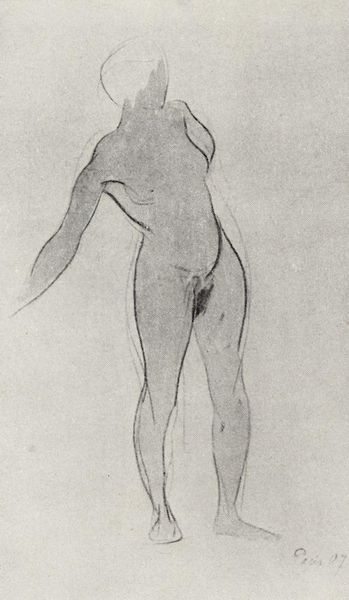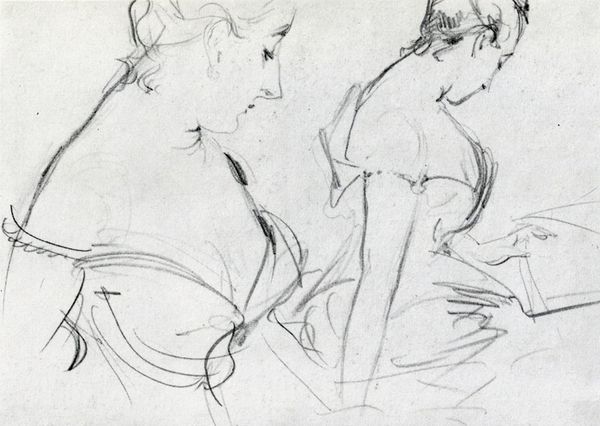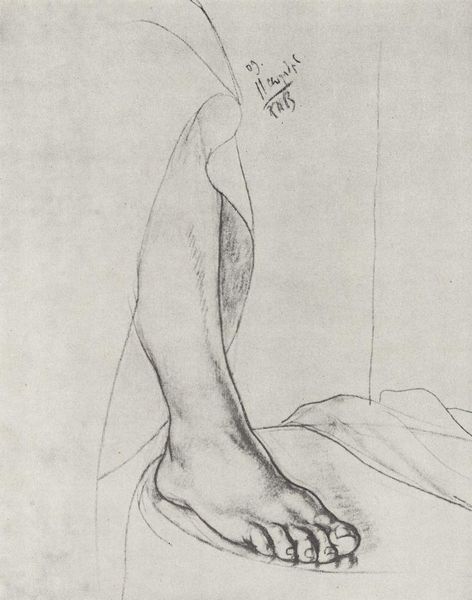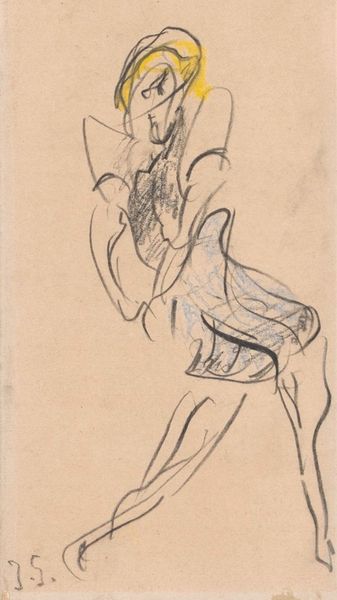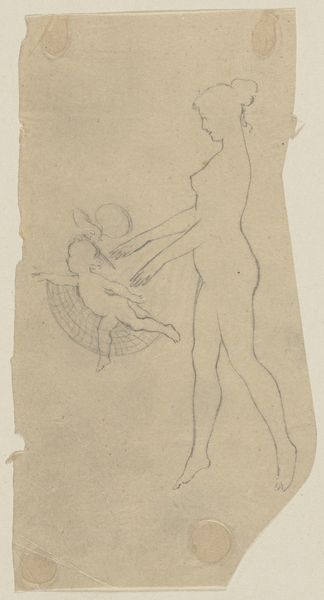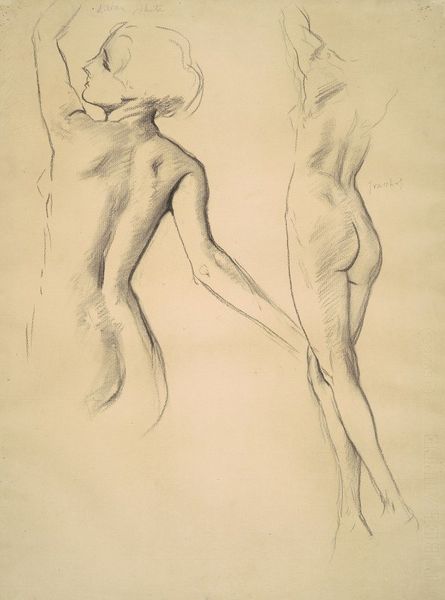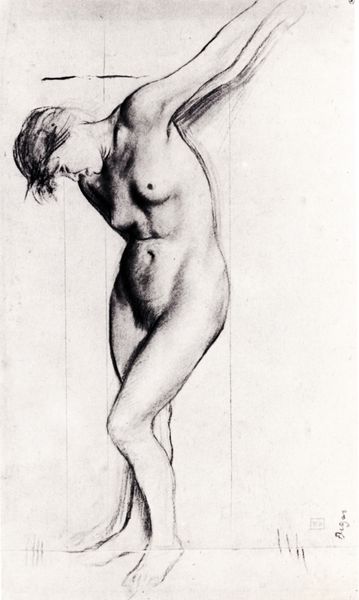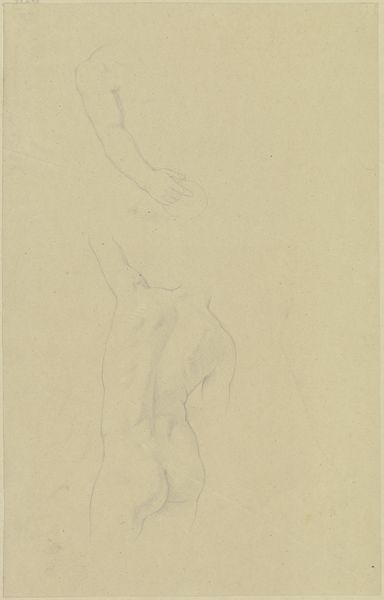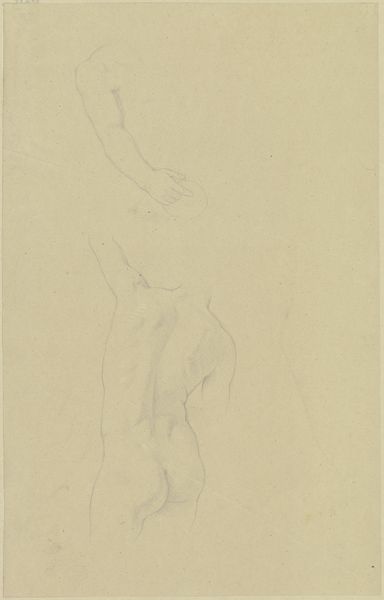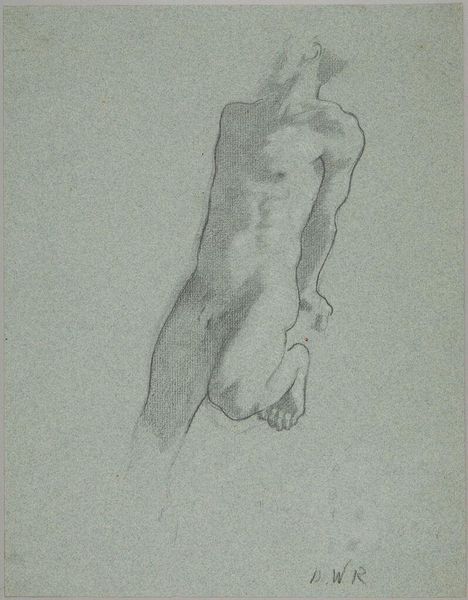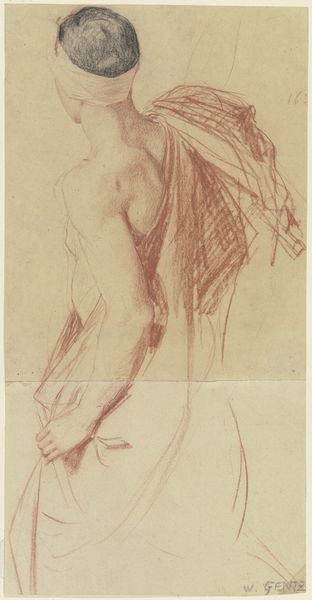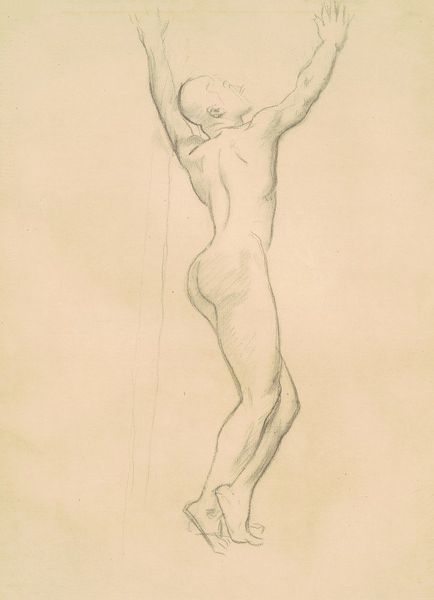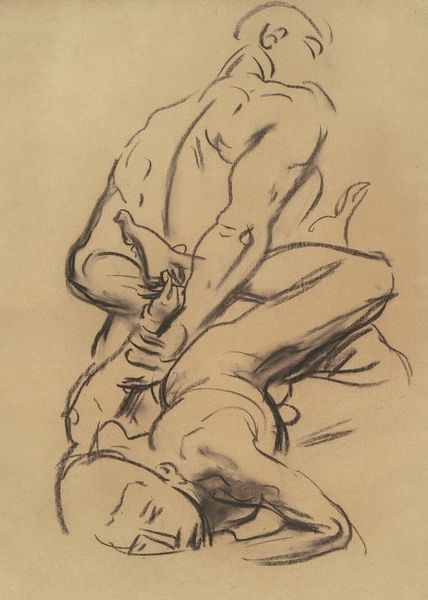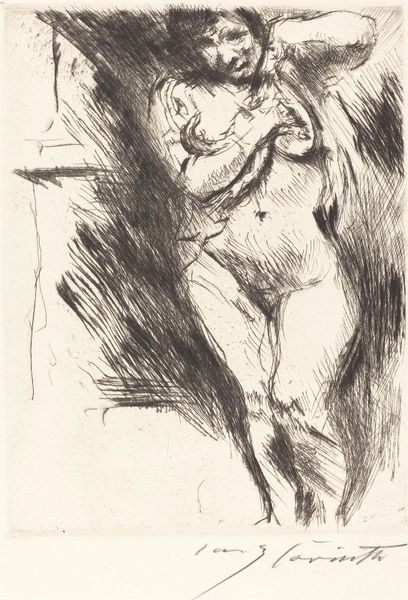
drawing, pencil
#
portrait
#
drawing
#
figuration
#
pencil drawing
#
sketch
#
pencil
#
portrait drawing
#
modernism
Copyright: Public domain
Curator: This is Kuzma Petrov-Vodkin's pencil drawing, "Boy Jumping into Water," created in 1913. Editor: It's kinetic, almost chaotic, but beautiful. There's an incredible sense of freedom in this rough sketch, despite the monochrome palette. Curator: It’s part of a larger body of work that engaged with the rise of modernism and changing societal norms in pre-revolutionary Russia. We must look at this artist in the face of immense cultural change to examine his influences and reception. Editor: How might the lens of critical race theory allow for further understanding? This boy’s identity is purposefully obscured, inviting commentary on youthful expression within established social structures, gender roles, and expectations in visual culture. How much access was this child granted as agency of movement in broader European or Russian contexts at the time? Curator: Petrov-Vodkin moved among the avant-garde circles. His work reflects a broader European interest in representing the human body and movement, but he was working within specific artistic, intellectual circles that embraced themes that we still think about today when we focus on youth, such as societal expectation, beauty, and strength. The focus on musculature, and his body suspended, reminds us of other artwork traditions like academic realism but is infused with new techniques to convey motion. Editor: Indeed. What kind of sociopolitical power did representations like these possess? We are only viewing a static representation but still witness such dynamism and a sense of unbound liberation. One thinks about youth as the symbol of progress and liberation; if we put it into practice, what shifts may unfold? Curator: Those tensions—the body as a site of possibility but also subject to power—permeate a lot of modernist art from this period, challenging institutional authority. Editor: It offers us an interesting entry point for exploring art history through social theory, highlighting power dynamics in a way that’s surprisingly resonant today. It gives us insight, a place to consider intersectional analysis, and an urgent demand for political engagement with art. Curator: Ultimately, viewing the art and social history allows us a new awareness of both, enriching the modern discourse, while respecting our past traditions.
Comments
No comments
Be the first to comment and join the conversation on the ultimate creative platform.
